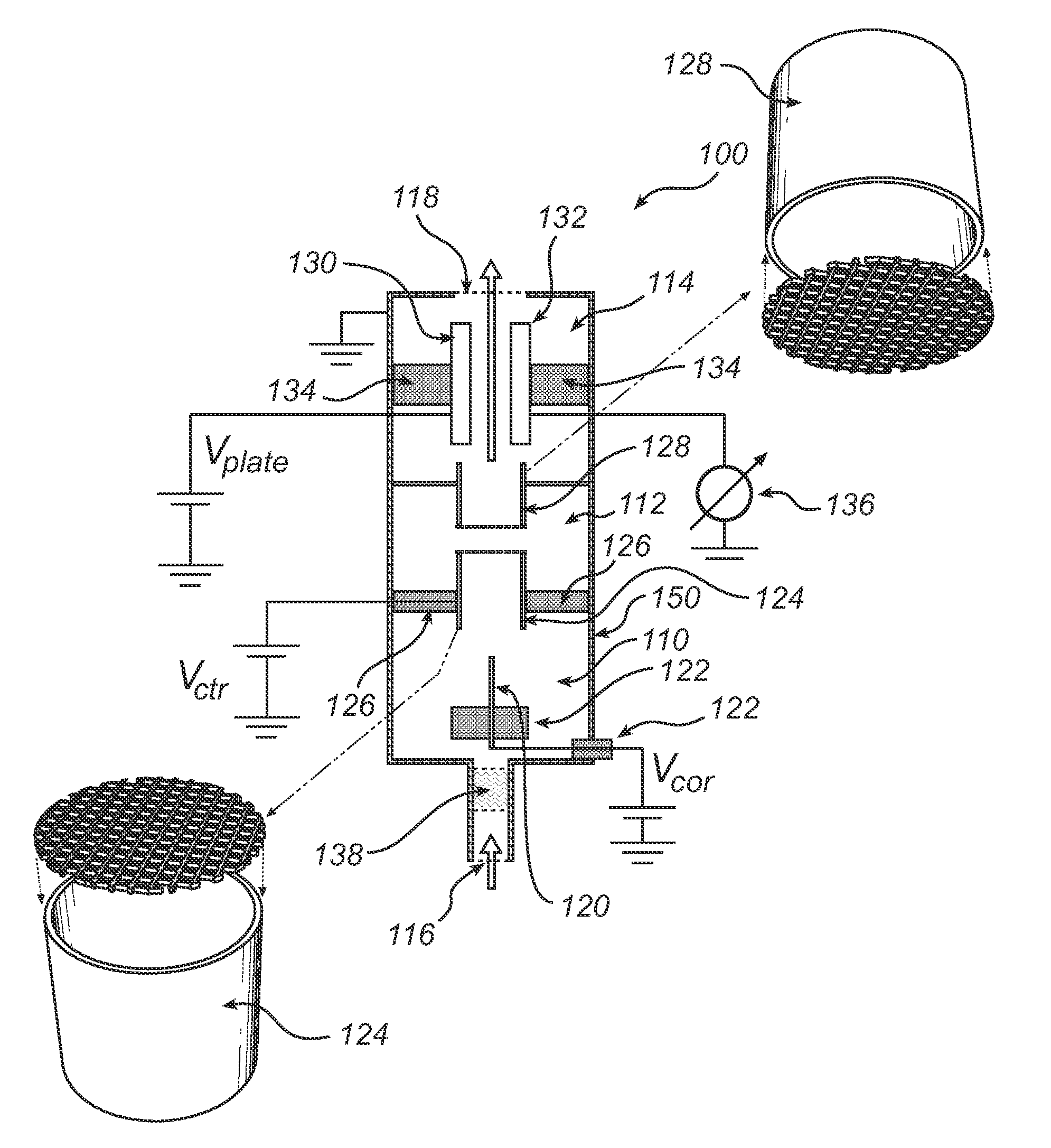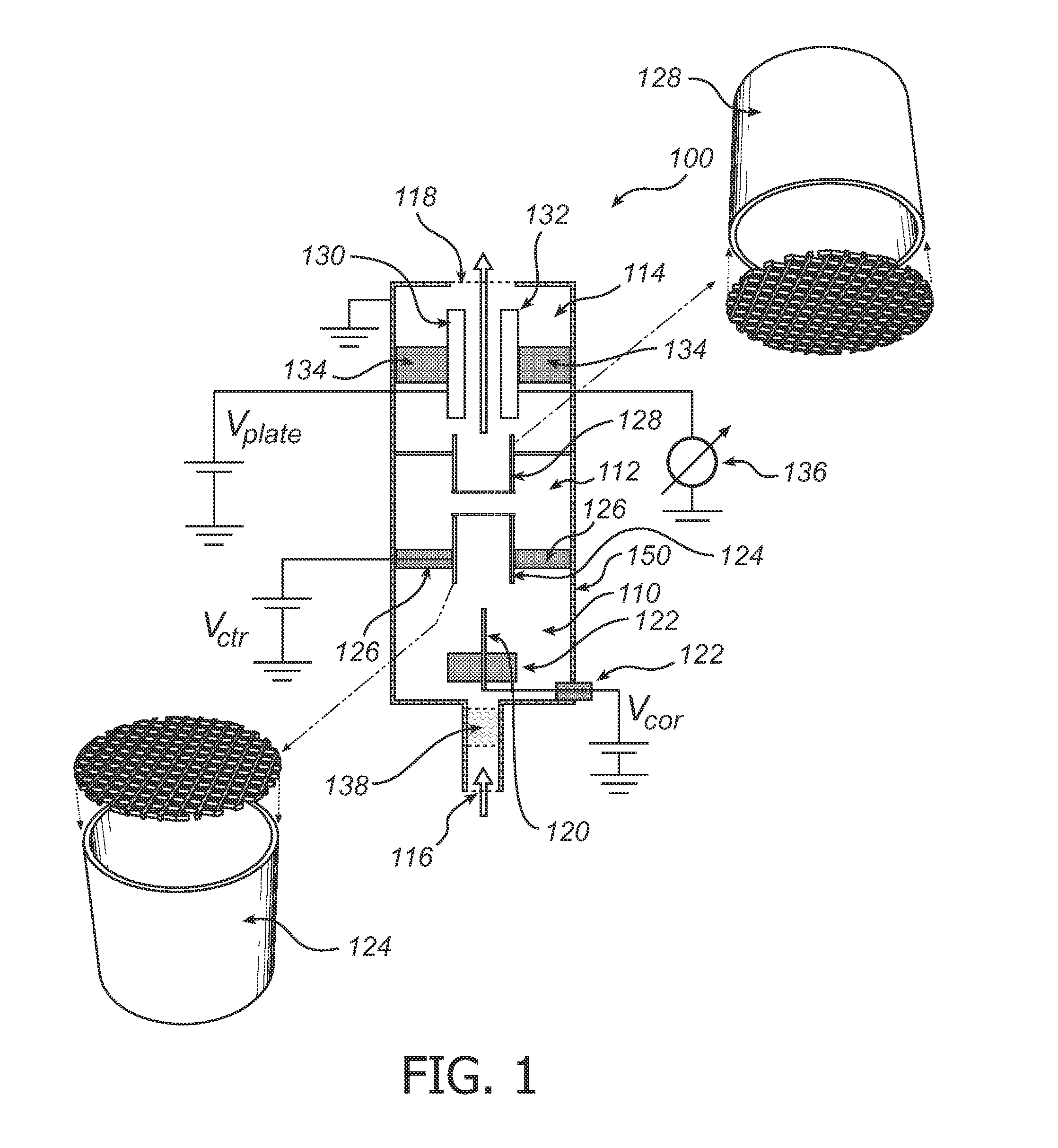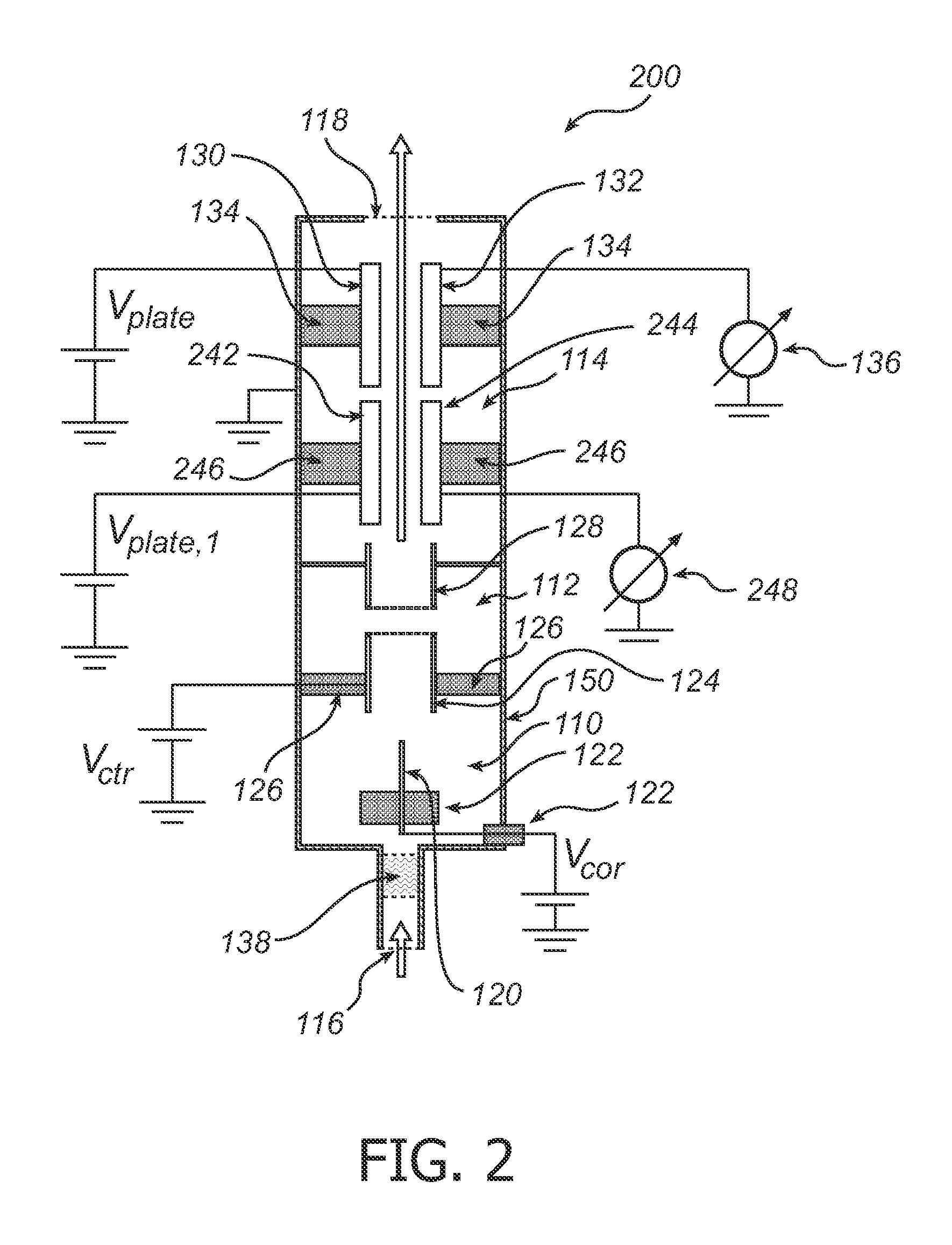Sensor for sensing airborne particles
a technology of airborne particles and sensors, which is applied in the direction of electrostatic separation, instruments, chemistry apparatuses and processes, etc., can solve the problems of limiting the general applicability of the thermal chimney effect, reducing the efficiency of the sensor, and reducing the energy consumption of the sensor. , to achieve the effect of no energy, no audible noise, and no energy
- Summary
- Abstract
- Description
- Claims
- Application Information
AI Technical Summary
Benefits of technology
Problems solved by technology
Method used
Image
Examples
Embodiment Construction
[0051]FIG. 1 shows a UFP sensor 100 according to a particular embodiment of the present invention. The sensor 100 comprises an air-filled central passage comprising three connected sections 110, 112, 114, wherein the first section 110 for charging particles extends in the direction of the passage from an inlet section 116 to a counter electrode 124; the second section 112 extends from the counter electrode 124 to a screening electrode 128; and the third section 114, intended for the sensing of charged particles, extends from the screening electrode 128 to an outlet section 118. The inlet section 116 and outlet section 118 are provided in the form of apertures in a housing 150 of the sensor 100 that is connected to earth or some reference (zero) potential.
[0052]In the first section 110, there is provided a high-voltage corona discharge electrode 120, which is connected to a potential Vcor and electrically insulated from other portions of the sensor 100 by means of insulator 122. The ...
PUM
| Property | Measurement | Unit |
|---|---|---|
| angle | aaaaa | aaaaa |
| diameter | aaaaa | aaaaa |
| number-averaged particle size | aaaaa | aaaaa |
Abstract
Description
Claims
Application Information
 Login to View More
Login to View More - R&D
- Intellectual Property
- Life Sciences
- Materials
- Tech Scout
- Unparalleled Data Quality
- Higher Quality Content
- 60% Fewer Hallucinations
Browse by: Latest US Patents, China's latest patents, Technical Efficacy Thesaurus, Application Domain, Technology Topic, Popular Technical Reports.
© 2025 PatSnap. All rights reserved.Legal|Privacy policy|Modern Slavery Act Transparency Statement|Sitemap|About US| Contact US: help@patsnap.com



